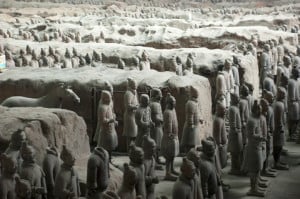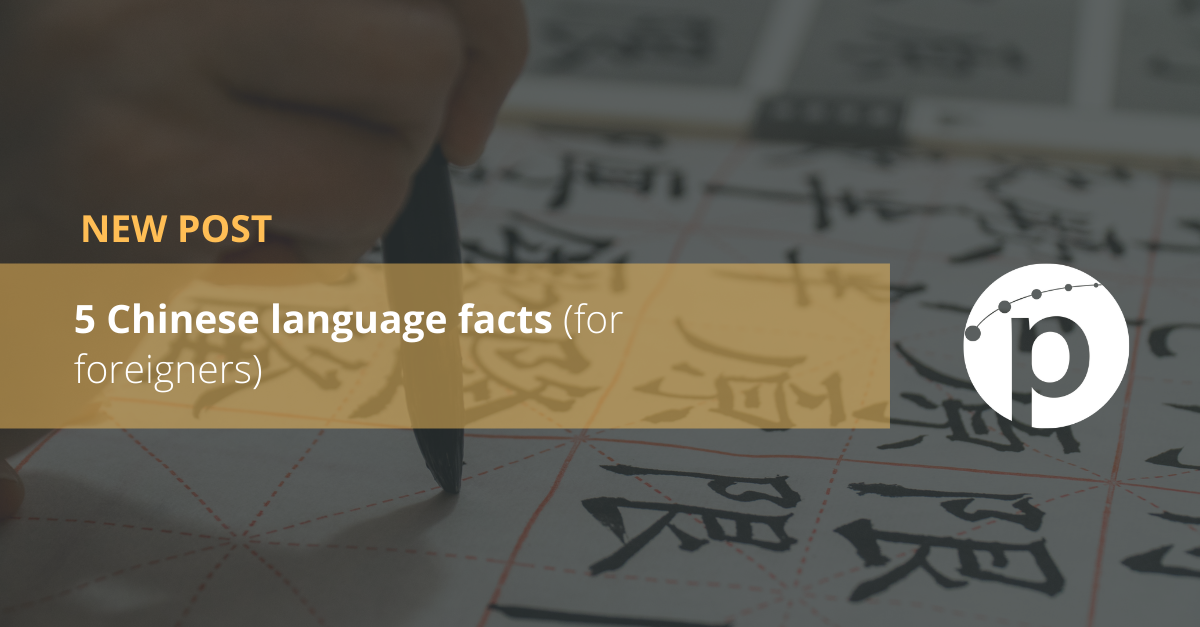1. Chinese is the oldest written language in the world.
People in the West do not tend to know much about the history of Mandarin Chinese. The elaborate calligraphy makes them feel illiterate and they never attempt to learn even one character. With likely six thousand years of history, it is as though Europeans, North Africans and Arabic speakers used ancient Egyptian hieroglyphs for their alphabet and could still trace back some meanings. That's how old Chinese writing is. Chinese character inscriptions have been found in turtle shells dating back to the Shang dynasty, which goes back to 1766-1123 B.C., proving the written language has existed for more than 3,000 years. The Chinese written language uses single distinctive symbols, or characters, to represent each word of the vocabulary, a trait shared by early written systems like Egyptian hieroglyphs. The vast majority of characters began as symbolic representations of spoken sounds and they had a meaning. However, traces on the paper have been simplified and can hardly ever be related to the original picture.

Chinese characters related to non-physical concepts tend to be a combination of characters. A large Chinese dictionary usually contains around 40,000 characters. An ordinary person must be able to recognize at least 2,000 - 3,000 characters to read a newspaper. Though the written system has evolved over time due to social changes, revolutions and politics, the principles of the Chinese language and its characters have remained basically the same. There are many Chinese dialects, although the written language is a common form of communication. Even though people from different provinces (particularly from the North and the South) are not able to understand each other verbally, they can understand each other in writing.
Chinese characters prove it is the oldest writing system in the world still in use.
2. Chinese has three writing systems
The written language can be subdivided into three forms: Simplified Chinese, Traditional Chinese, and informal slang or phonetic Chinese. There is also a growing form of Chinese called "pin-yin" that is widely used among young people— this is the Chinese language transcribed using roman spelling, very fashionable among mobile devices users.3. Chinese is a family of languages, not just one
In China, there are about eight different linguistic groups that together represent hundreds of dialects and their variants, which in most cases are not mutually intelligible. Scholars speak of Chinese as a family of languages, similar to the Romance family of languages (French and Spanish are not fully mutually understandable, although many words are similar). Even so, with over 900 million native speakers, standard Chinese, recognized as Mandarin Chinese, is the most widespread Sino-Tibetan language among the languages of Asia. It became popular during the Manchu dynasty in Beijing (more details below). In terms of speaker population, Chinese is a language of the Sino-Tibetan family spoken in China, Taiwan, Malaysia, and other parts of Southeast Asia, as well as by lots of Chinese communities around the world.4. Chinese and Japanese ARE NOT related
Westerners tend to view Chinese and Japanese as similar or related languages. In fact, Chinese and Japanese are different languages. True, Japanese has borrowed many characters from old Chinese, as the writing system was introduced to rural Japan from developed China many centuries ago. Pronunciation is radically different, but it is possible for speakers of both languages to exchange some information and have a certain level of understanding if they write common characters.5. Where does the name "Mandarin" come from?
A largely diffused explanation as to the origin of the term "Mandarin" originates from the Hindi word "mantri" which means "counselor" or "minister of state," which was then passed to the Malaysian word "mantri." This, or a similar word, was the word finally found by the Portuguese when they came into contact with China, adapted as "mandarim." From Portuguese, it was quickly assimilated into other European languages. This word made its way to the Portuguese vocabulary due to the Chinese-Portuguese trade relations in the early 17th century. Portuguese traders could only deal with Chinese officials from the Chinese imperial government. Like this, the Chinese population was protected from the diffusion of foreign customs. It was thus that the language used by the officials who ruled was known as "Mandarin" in the West.
Further reading: Mandarin Chinese
A short history of the language

Chinese is certainly a language with ancient origins. In fact, the history of the Chinese language can be organized into the following stages:
- Archaic Chinese (14th to 11th century B.C.): the language of oracular inscriptions on bones and tortoise shells. The oldest inscriptions are from the Shang Dynasty (c. 1400-1100 b.c.), and have been found in the ancient capital, Anyang, and some other places. About 2,000 characters have been identified, which represent a much higher number of words. Keep in mind that the Shang Dynasty characters are polyvalent, their meaning depending on the place and function in pronunciation.
- Classical Chinese (Wenli - 11th century B.C. to 8th century A.D.): the golden age of the Chinese language and literature. Strictly speaking, the term Chinese refers to the Chinese language and literature from the 6th century B.C. to the 3rd century A.D., including the works of Confucius, Mencius, Lao Tzu, Han Fei, Mo Tzu and Chuan Tzu, to name just six philosophers who had a strong influence on Chinese culture. In a broader sense, the Classical Chinese era begins with the Shih Ching ('Book of Odes'), compiled between the 11th and 6th centuries B.C., and the Wu Jing ('Five Classics'). After the burning of books by Emperor Qin Shi Huang Di (231 B.C.), the classic texts had to be painstakingly rebuilt in the early years of the Han Dynasty, whose alignment with Confucianism determined the direction of Chinese literature over the centuries. There were three crucial factors for Confucian hegemony: the sanctity of the classic texts, the research system based on these texts and their commentaries, and the supremacy of the writers who would explain the classics and determine the research. Besides this, especially in the Tang and Sung Dynasties, poets emerged that produced some of the most attractive works of art in the world.
- Modern Chinese: essentially retains the vocabulary and morphology of Classical Chinese in its later stage, but was enriched and adapted for use in modern society. During the Sung-Yuan Dynasties (7th to 14th century A.D.), Báihuà (vernacular Chinese), was first used for literary purposes, e.g. in the prose passage of the Yuan drama. Baihua was also the vehicle for the narrative prose of the great Ming novels, such as 'The Dream of the Red Chamber.' After the fall of the Manchu Dynasty and the establishment of the Republic in 1911, both the movement for standardization of the national language and the replacement of Chinese writing by another alphabetic character became extremely important. Both steps were regarded as indispensable for universal education in China; a key role in this was played by the cultural revolution, known as the May Fourth Movement, and the implementation of proposals for a national language. Finally, in 1949, Baihua, now known as Putonghua or 'common language,' was officially adopted as the national language of the Republic of China.
Further information: Chinese Translation Services



